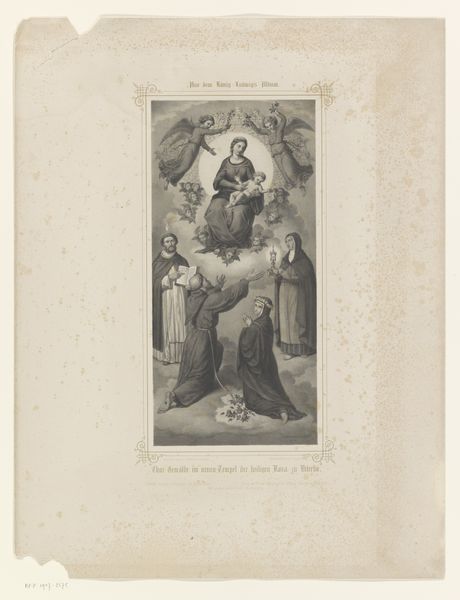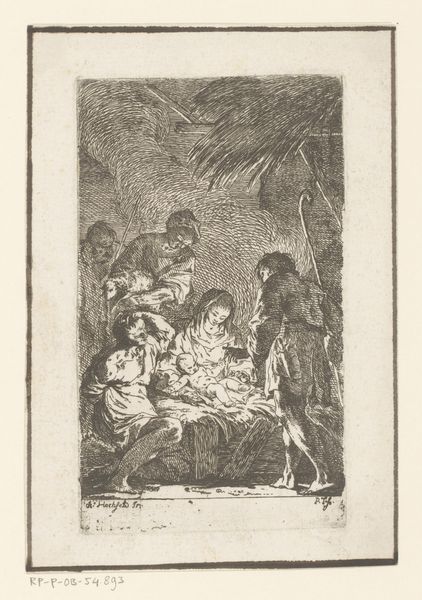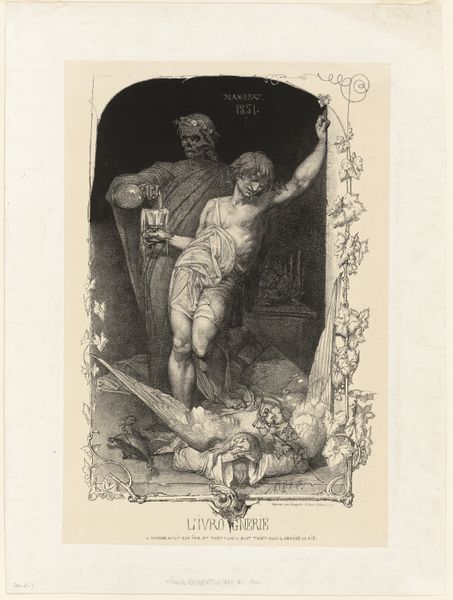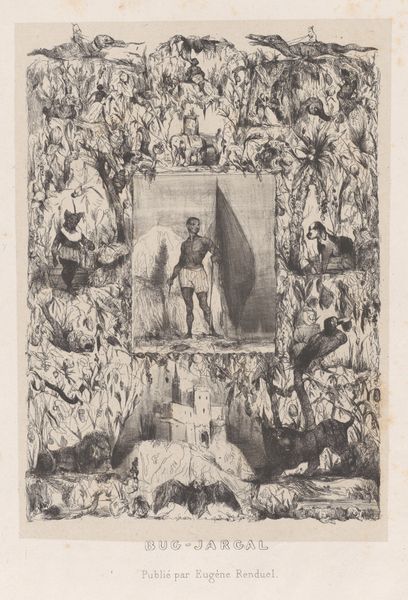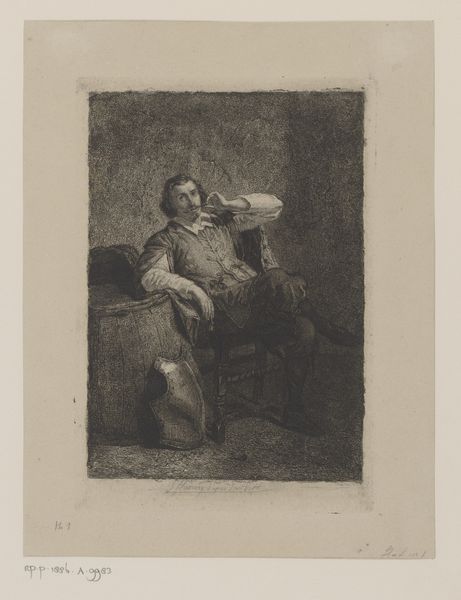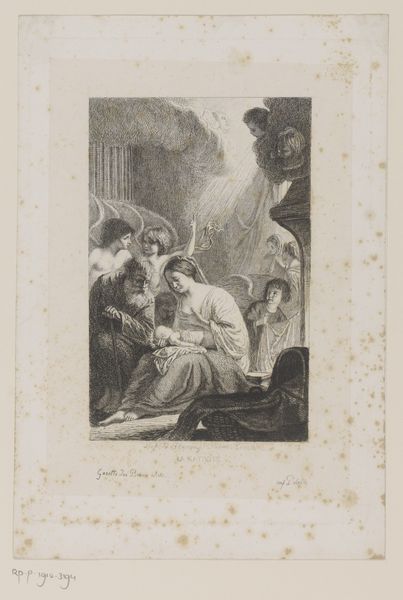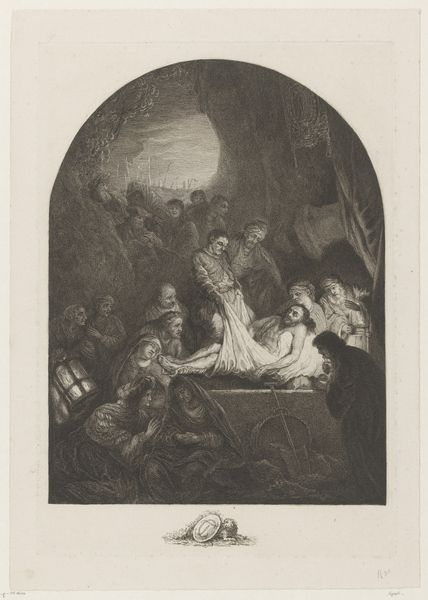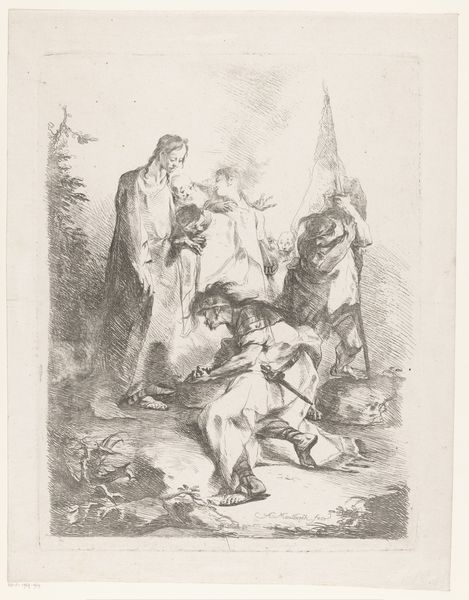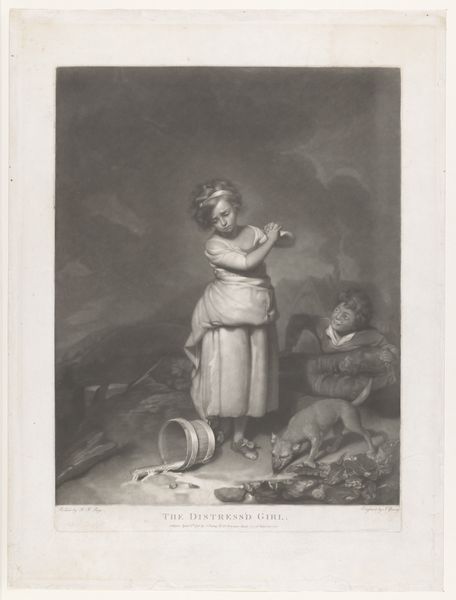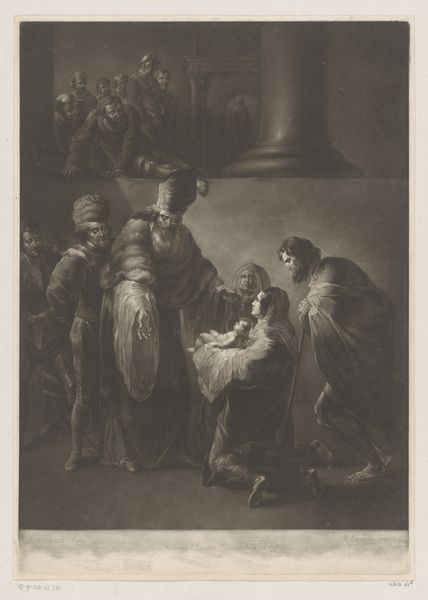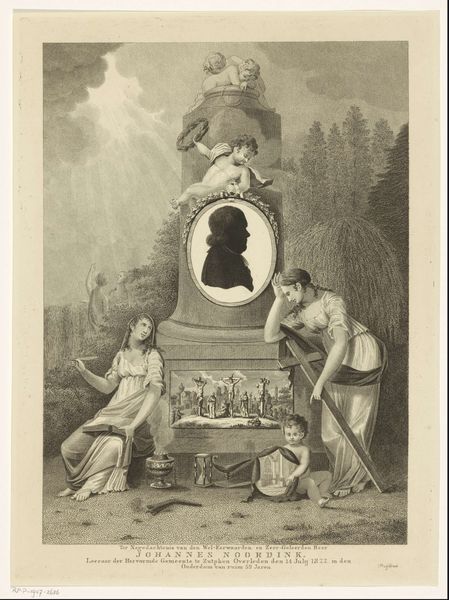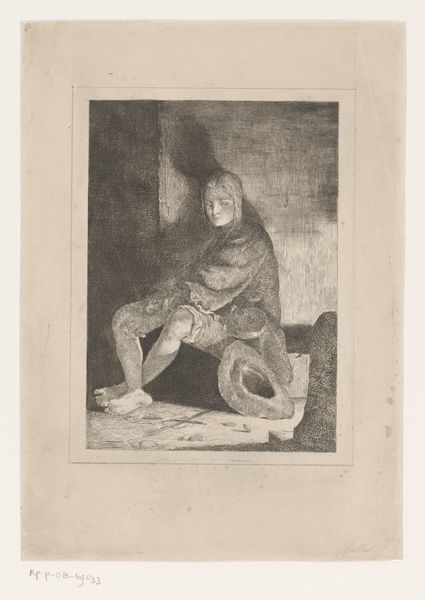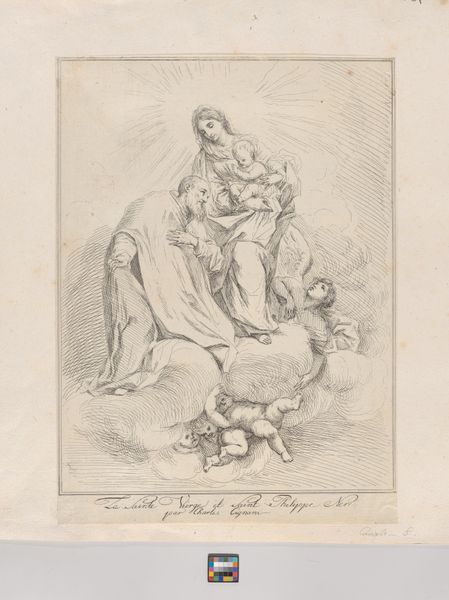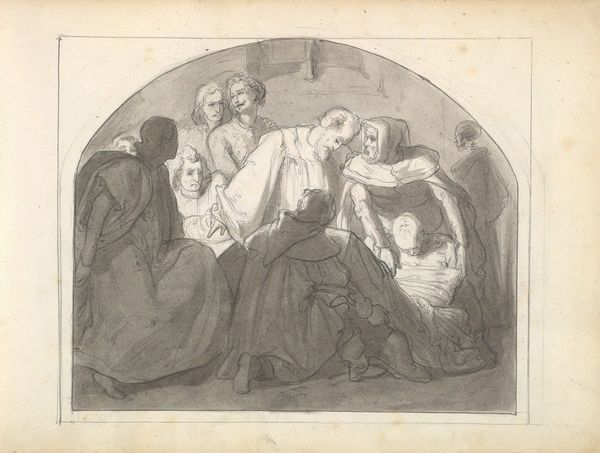
print, engraving
#
portrait
# print
#
caricature
#
old engraving style
#
romanticism
#
history-painting
#
engraving
Dimensions: height 445 mm, width 300 mm
Copyright: Rijks Museum: Open Domain
Editor: This print, "Daniel O'Connell in de leeuwenkuil," or "Daniel O'Connell in the Lions' Den," is attributed to John Doyle, and likely dates to 1844. It's an engraving, housed here at the Rijksmuseum. The imagery is quite striking - Daniel O'Connell seems trapped in this dramatically lit space, surrounded by… lion-headed figures with human faces. How do you interpret this work? Curator: The title immediately alludes to the biblical story of Daniel, thrown into the lions' den for his faith. Notice how Doyle echoes that narrative visually, placing O’Connell in a precarious situation. But the lions are not quite lions, are they? What do you notice about their faces? Editor: That's right! They're caricatures! So these lion-people figures must represent someone or something specific. Curator: Precisely! Consider the political climate of 1844. O'Connell was a prominent Irish political figure, advocating for Catholic emancipation and repeal of the Act of Union. Could these lion-figures symbolize his political opponents? Consider their expressions; are they menacing, dismissive, or something else entirely? What feelings are conveyed in how they look up towards Daniel? Editor: There is a mix, some seem angry, some scheming, some almost sorrowful… And there are people looking down at Daniel as well. The lion figures with the addition of people suggests he is facing enemies from many different levels of society? Curator: Precisely. And observe the light; it spotlights O'Connell, drawing parallels to the biblical Daniel's unwavering faith. The shadows, conversely, obscure the faces of his opponents. Does that dichotomy tell us something? Is the artist making a judgement? What would you say Doyle suggests? Editor: I think Doyle positions O’Connell as righteous, perhaps even divinely protected, against those who oppose him. Seeing all of this, I really understand the layers of symbolism in the print now! Curator: Indeed! By understanding the symbols and the context in which Doyle created it, we are much closer to unlocking the emotional and political weight the artist imbued in the image.
Comments
No comments
Be the first to comment and join the conversation on the ultimate creative platform.
